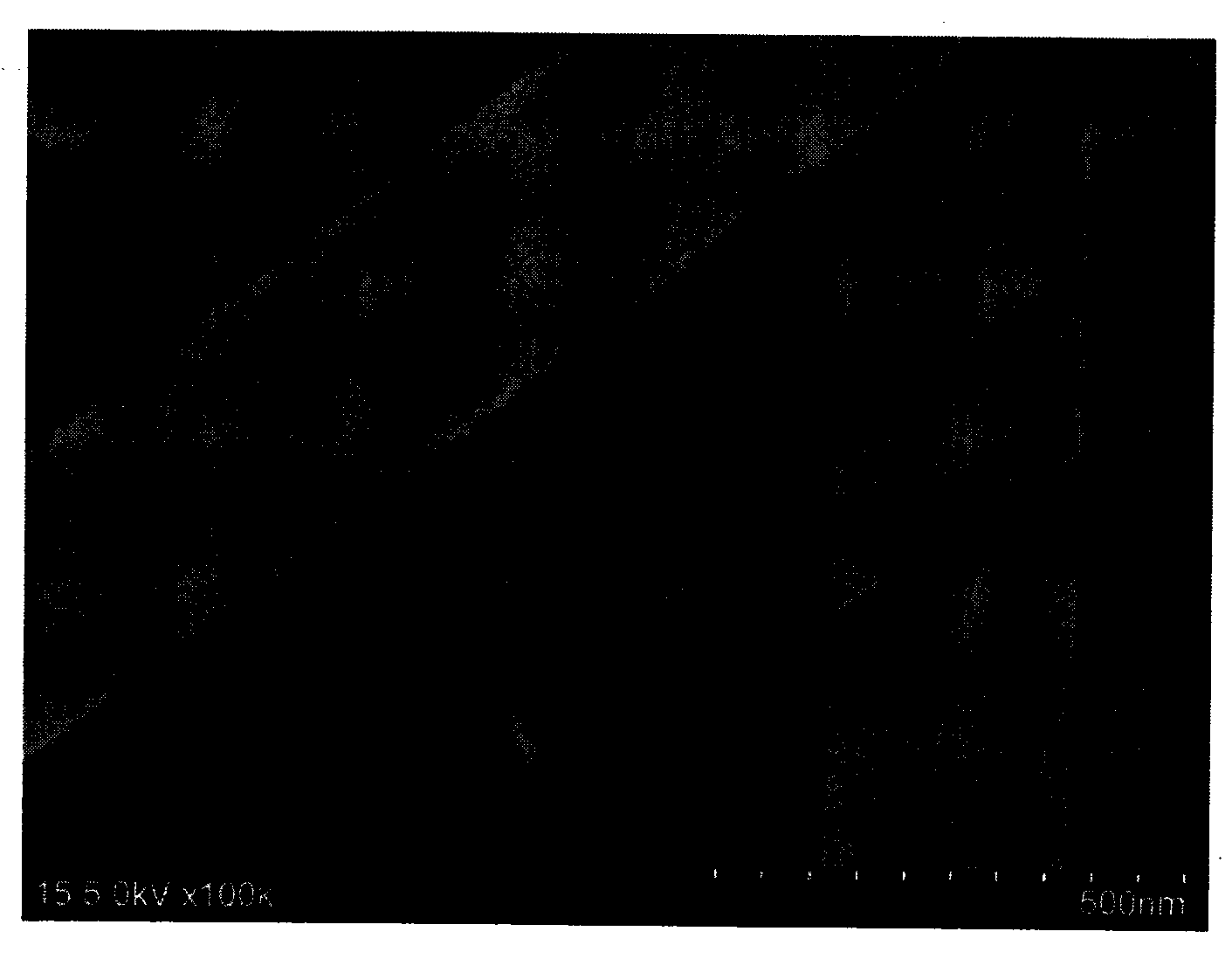Preparation methods of porous carbon nanofiber felt and porous carbon nanofiber electrode
A nanofiber, porous carbon technology, applied in the manufacture of hybrid/electric double layer capacitors, heating/cooling fabrics, non-woven fabrics, etc., can solve the problems of energy consumption and reagent raw materials, increased production costs, pollution, etc. Effects of chemical properties and desalination, simplified operation and cost reduction
- Summary
- Abstract
- Description
- Claims
- Application Information
AI Technical Summary
Problems solved by technology
Method used
Image
Examples
Embodiment 1
[0034] Weigh 0.9371g polyacrylonitrile (PAN; M w =150000), add in 10mL dimethylformamide (DMF); add 1.4056g dimethyl sulfone (DMSO2), 60 ℃ of constant temperature water baths are heated until completely dissolving, be mixed with PAN concentration and be 9%, PAN and DMSO Mass ratio is 2:3 spinning precursor solution. The precursor solution placed in a 10mL needle tube was pushed into a 12kV electrostatic field through a needle with a diameter of 0.5mm at a constant rate of 1mL / min by a quantitative pump for electrospinning. The distance between the receiving plate and the needle was 15cm, and the ambient temperature was 20.5°C. The relative humidity is 35%. The nanofiber mat obtained by electrospinning was placed in a muffle furnace, and the temperature was raised from room temperature to 80 °C at a rate of 1 °C / min in an air atmosphere, stayed for 1 h, and then raised to 260 °C at a rate of 1 °C / min. ℃ and stay for 1h to complete the pre-oxidation pore-forming process, figu...
Embodiment 2
[0035] Embodiment two (control test)
[0036] Weigh 0.9371g polyacrylonitrile (PAN; M w =150000), add 10mL of dimethylformamide (DMF) in a 60°C constant temperature water bath and heat until completely dissolved to prepare a spinning precursor solution with a PAN concentration of 9%. Use a quantitative pump to push the precursor solution in a 10mL needle tube into a 12kV electrostatic field through a needle with a diameter of 0.5mm at a constant rate of 1mL / min. The distance between the receiving plate and the needle is 15cm, the ambient temperature is 28°C, and the relative humidity is 35 %. The nanofiber mat obtained by electrospinning was placed in a muffle furnace, and the temperature was raised from room temperature to 80 °C at a rate of 1 °C / min in an air atmosphere, stayed for 1 h, and then raised to 260 °C at a rate of 1 °C / min. ℃ and stay for 1h to complete the pre-oxidation process. Under a nitrogen atmosphere, place the pre-oxidized nanofiber mat in a tube furnac...
Embodiment 3
[0038] Weigh 0.9371g polyacrylonitrile (PAN; M w =150000), add in 10mL dimethylformamide (DMF); add 0.6264g dimethyl sulfone, heat in a constant temperature water bath at 60°C until completely dissolved, and prepare the PAN concentration as 9%, and the mass ratio of PAN to DMSO2 is 3:2 spinning precursors. The precursor solution placed in a 10mL needle tube was pushed into a 12kV electrostatic field through a needle with a diameter of 0.5mm at a constant rate of 1mL / min by a quantitative pump for electrospinning. The distance between the receiving plate and the needle was 15cm, and the ambient temperature was 29°C. The relative humidity is 32%. The nanofiber mat obtained by electrospinning was placed in a muffle furnace, and the temperature was raised from room temperature to 80 °C at a rate of 1 °C / min in an air atmosphere, stayed for 1 h, and then raised to 260 °C at a rate of 1 °C / min. °C and stay for 1h to complete the pre-oxidation pore-forming process. Under a nitroge...
PUM
 Login to View More
Login to View More Abstract
Description
Claims
Application Information
 Login to View More
Login to View More - R&D
- Intellectual Property
- Life Sciences
- Materials
- Tech Scout
- Unparalleled Data Quality
- Higher Quality Content
- 60% Fewer Hallucinations
Browse by: Latest US Patents, China's latest patents, Technical Efficacy Thesaurus, Application Domain, Technology Topic, Popular Technical Reports.
© 2025 PatSnap. All rights reserved.Legal|Privacy policy|Modern Slavery Act Transparency Statement|Sitemap|About US| Contact US: help@patsnap.com



